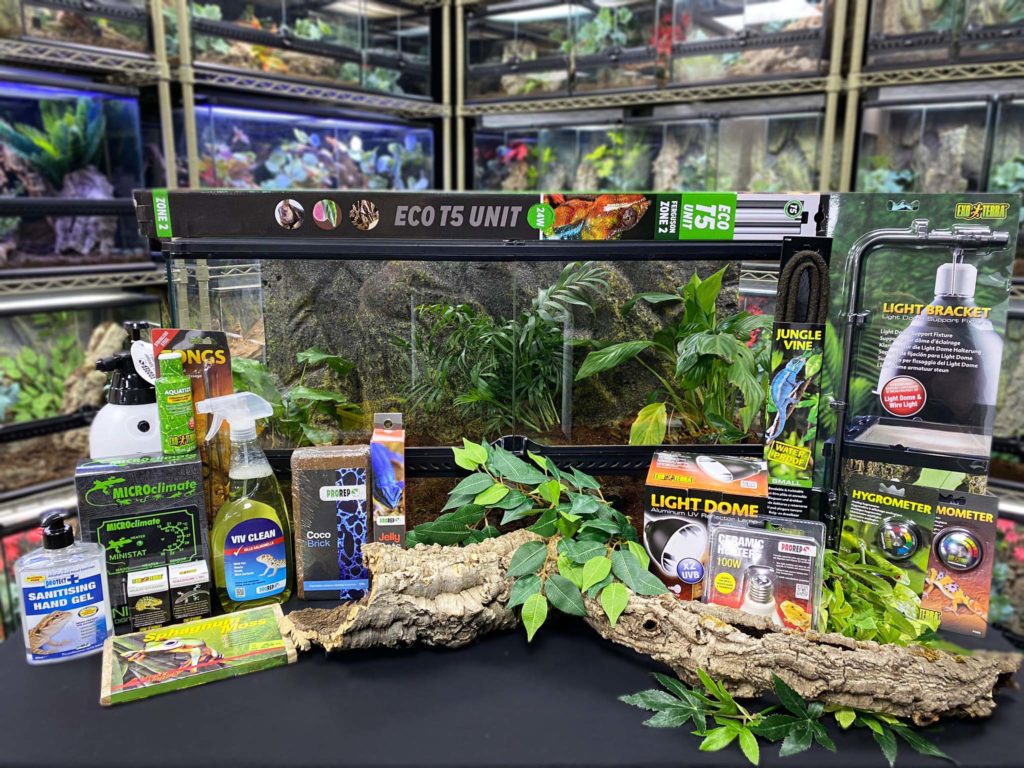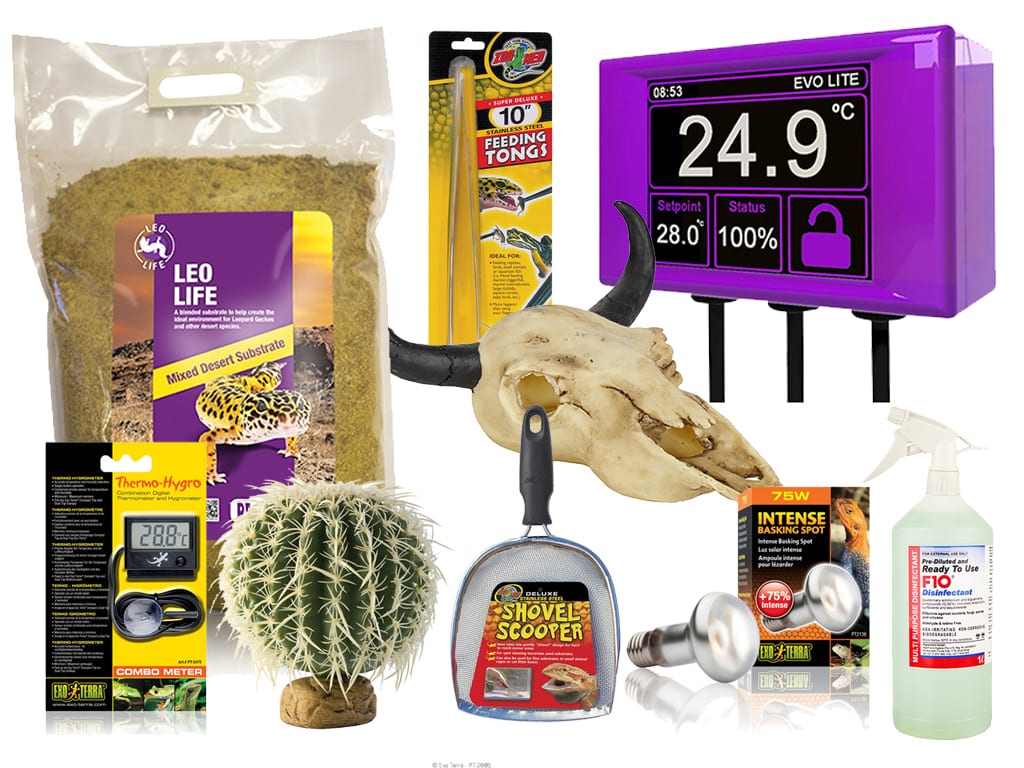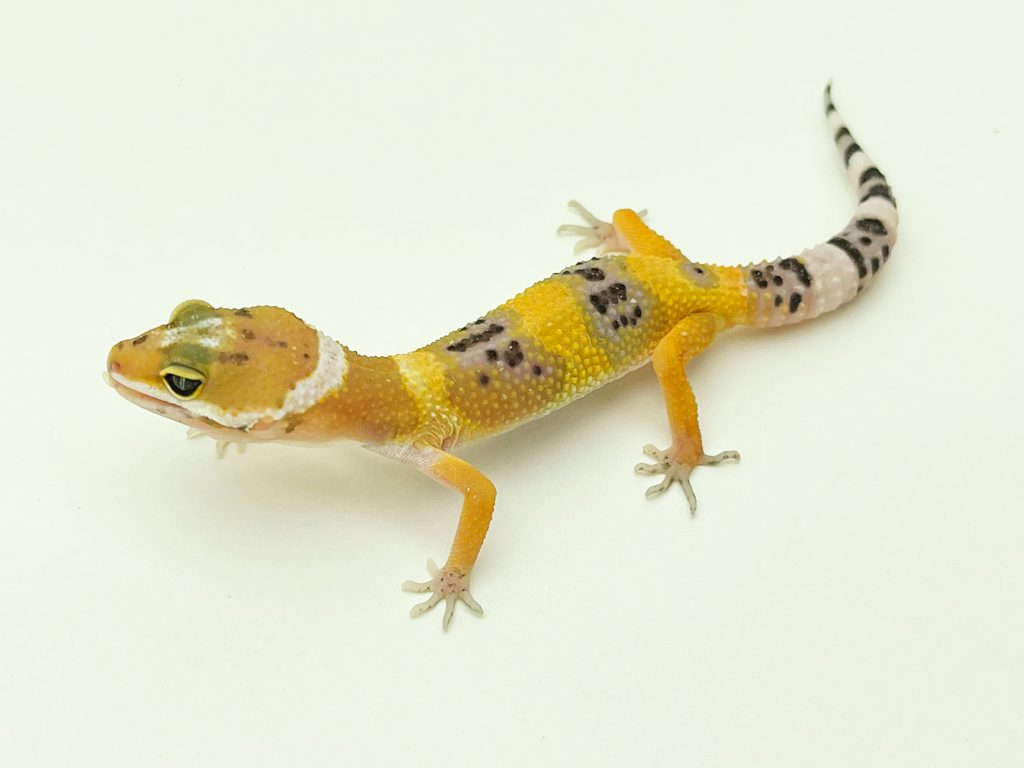
Leopard Gecko
Care Sheet

Leopard Geckos are nocturnal lizards originating in Pakistan. They are found in the desert and are extremely active during the night time hours but will sleep for many hours during the day.
Leopard Geckos are cold blooded and are known as ‘exothermic’– meaning that they need heat from an outside source in order to maintain their body temperature. We use a red night lamp or ceramic lamp so that it can be left on during the night in the winter if required.
Leopard Geckos enjoy a large terrestrial enclosure to provide them with plenty of space to exercise as they would in the wild. They are surprisingly good at climbing and enjoy a number of different types of décor to exercise freely. Try rocks, ladders, backgrounds and hides for your Geckos to dig around and climb on
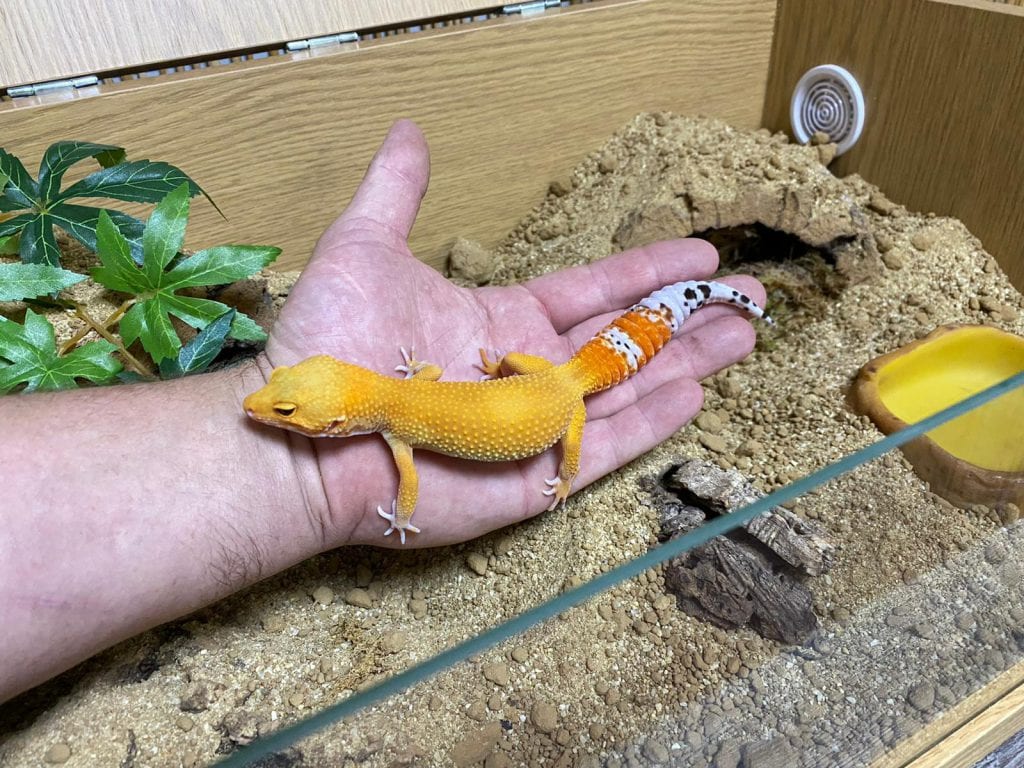

HANDLING YOUR GECKO:
Always wash your hands or use an anti-bacterial hand wash before and after handling your leopard gecko.
Like many species of lizard, leopard geckos are able to drop their tail in order to escape predators who may catch them by their tail in the wild. Leopard geckos are also insecure with objects approaching them from above as they would be prey for birds in the wild.
When picking up your gecko, always scoop from below and avoid gripping the tail. Leopard geckos do not enjoy being stroked as their skin can be very sensitive but some do enjoy their chin being stroked.
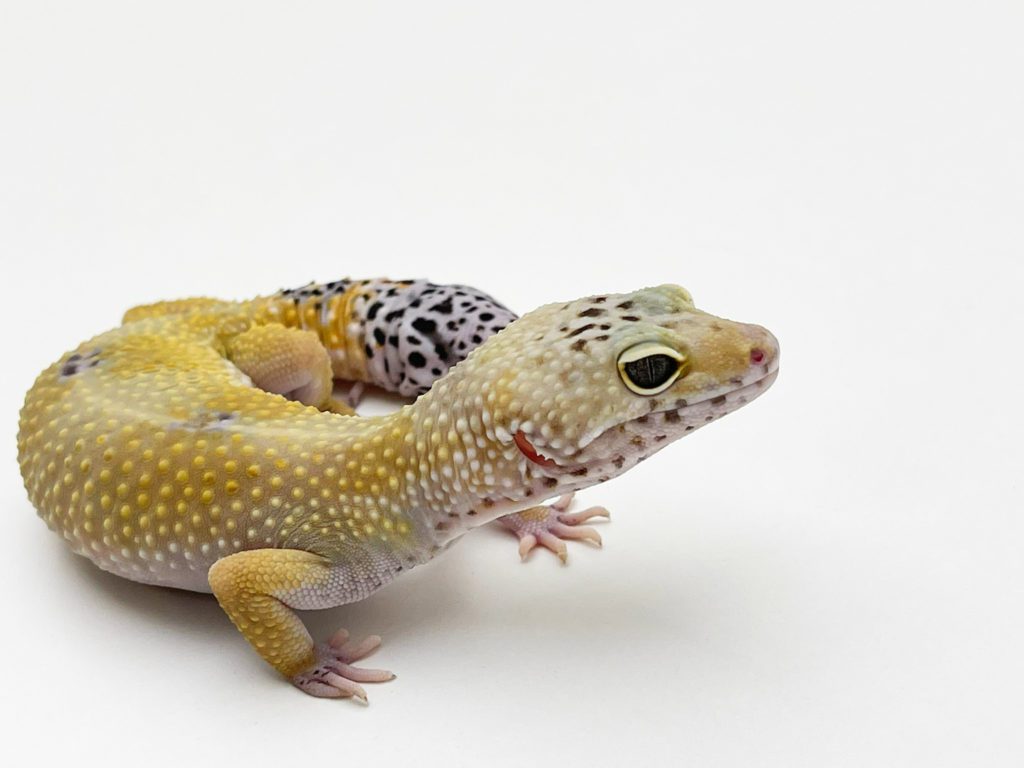

SEXING YOUR GECKO
Leopard geckos can be hard to sex for the first 3 –6 months until their genitals grow and become visual. Leos can be sexed by looking between their legs.
Males will have large waxy pores in a V shape and presence of the hemipenes can be seen at the bottom of the tail behind the vent. Gently secure your gecko and turn upside down to see between the back legs.
Males will also display a large bulge just at the top of their tail. There is no difference in the colour of females to males, but females often carry more weight as they would require this for breeding in the wild.


HEALTH CHECK
Eyes– Eyes are clear with no eye caps. Sometimes with a dry shed, eye caps get stuck on leopard geckos. To help get the shed off fully, you can set up a moist moss hide for your gecko. Use Beaphar skin and eye ointment for stuck caps and gently remove with a cotton pad- if the cap is really stuck, do not attempt to remove it. Contact us for assistance.
Skin– The skin is clear of shed and there are no cuts or scrapes on the geckos skin. Occasionally locusts or crickets can nip the skin of the gecko. Always remove live food that is not eaten after the geckos meal to prevent further bites and stress which can stop your gecko eating.
Limbs– All the limbs are moving correctly and the gecko is able to walk and move normally. Geckos can suffer from a condition called MBD (metabolic bone disease). This occurs when geckos do not have enough calcium and causes their bones to grow abnormally, eventually restricting their movements. MBD cannot be reversed so always dust livefood with calcium twice a week to avoid MBD occurring








ADVICE FOR LIFE!
When you buy your Pet & Housing from us!
Priority Boarding | Advice available face to face, via Telephone, Facebook Chat, Email, Instagram

